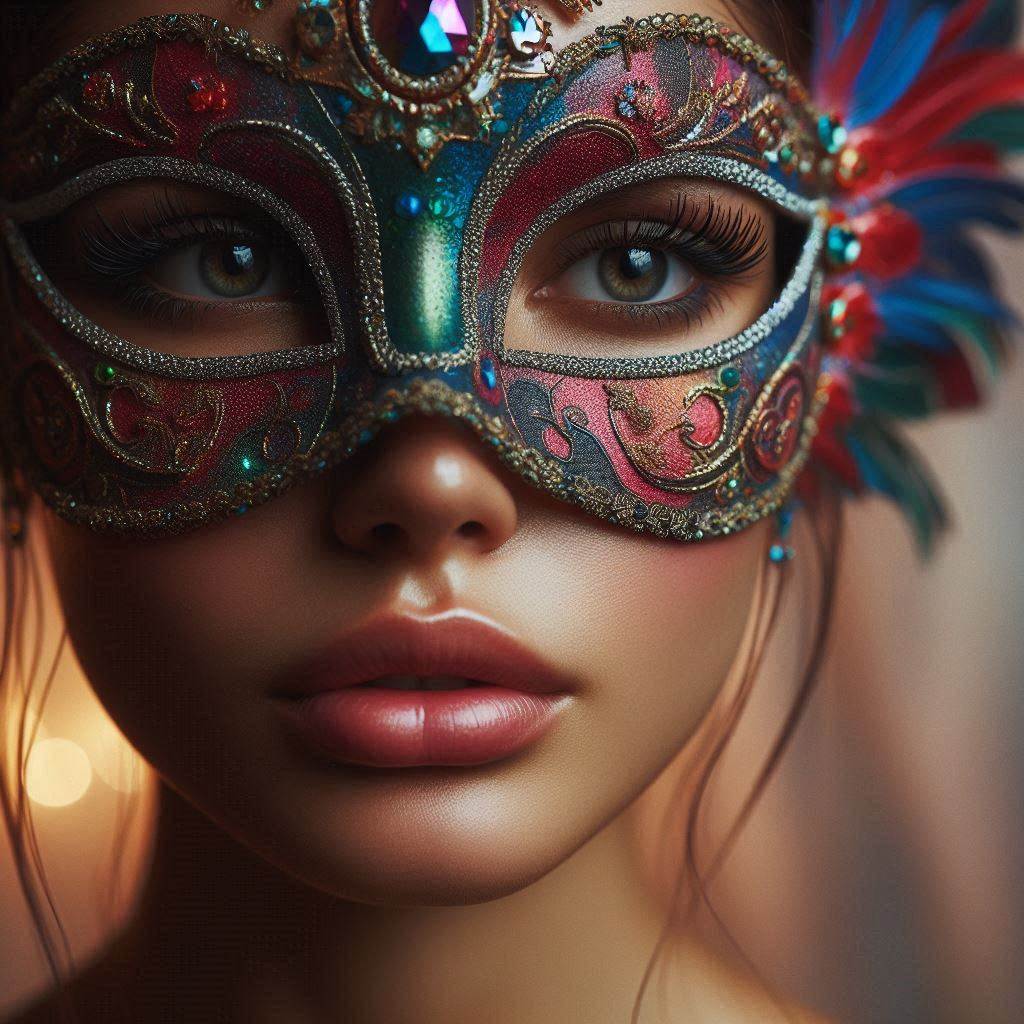Introduction
Storytelling drives many creative mediums, including literature, film, and theater.
It conveys emotions, messages, and ideas that resonate with audiences.
In these mediums, costumes enhance storytelling by visually bringing characters to life.
They communicate a character’s background, personality, and evolution without words.
Costumes help define:
- Era: Period-specific costumes transport viewers to different timeframes.
- Social status: Clothing choices can signify wealth, poverty, or status shifts.
- Character development: Changes in costumes reflect personal growth or transformation.
By thoughtfully designing costumes, creators deepen emotional connections with their audience.
Costumes provide essential context and visual cues that enrich the narrative.
The purpose of this blog post is to explore how costumes contribute to developing storytelling.
We will dive into techniques and examples of costume design that elevate narrative impact.
Through strategic use of color, fabric, and style, costumes can add layers to storytelling, making it more engaging and memorable.
The Significance of Costumes in Storytelling
How costumes help to establish the setting and time period of a story
Costumes play a significant role in storytelling as they help to establish the setting and time period of a story.
When an audience sees characters in period-appropriate attire, it immediately places them in a specific era or location.
For example, seeing characters in elaborate Victorian dresses informs the audience that the story takes place in the 19th century.
How costumes can convey the personality traits and background of a character
Furthermore, costumes can convey the personality traits and background of a character.
The colors, fabrics, and styles chosen for a character’s outfit can provide subtle clues about their nature.
A character dressed in all black may be interpreted as mysterious or villainous, while bright colors and playful patterns can suggest a cheerful or eccentric personality.
Examples of iconic costumes from popular movies or plays that have helped to enhance storytelling.
In popular movies and plays, iconic costumes have played a crucial role in enhancing storytelling.
Let’s explore some examples:
- Dorothy’s dress in “The Wizard of Oz”: The blue gingham pinafore worn by Judy Garland’s character instantly became iconic and is now synonymous with the film.
This simple yet recognizable costume helps to define Dorothy as a wholesome and innocent young girl on a magical journey. - Darth Vader’s costume in “Star Wars”: The imposing black armor and helmet worn by Darth Vader establish him as a formidable and menacing figure.
The costume not only reflects his role as a powerful Sith Lord but also hides his true identity, adding depth to the character. - Elle Woods’ pink attire in “Legally Blonde”: Reese Witherspoon’s character’s penchant for pink outfits reflects her bubbly and optimistic personality.
The contrast between her vibrant wardrobe and the serious legal world she enters serves as a visual representation of her journey towards self-discovery and empowerment. - The wardrobe in “The Crown”: The Netflix series meticulously recreates the royal family’s iconic outfits, from Queen Elizabeth II’s signature pastel suits to Princess Diana’s elegant gowns.
The costumes not only capture the essence of each character but also help to transport viewers to different eras in British history.
These examples demonstrate how costumes can be powerful tools in storytelling, enriching the narrative and deepening our understanding of characters and their worlds.
By paying attention to the details of costume design, filmmakers and theatrical productions can create more immersive and engaging stories for audiences to enjoy.
Transform Your Career Today
Unlock a personalized career strategy that drives real results. Get tailored advice and a roadmap designed just for you.
Start NowRead: Influential Costume Designers to Follow
Building Character Through Costumes
When it comes to storytelling through costumes, building character is a fundamental aspect that cannot be overlooked.
Costumes play a pivotal role in transforming actors into the characters they are portraying, bringing them to life in a tangible and visual way.
How costumes can transform an actor into a specific character
To begin with, costumes can be incredibly transformative, allowing actors to inhabit their characters fully.
The way a character dresses can speak volumes about who they are, where they come from, and even hint at what their motivations may be.
A well-designed costume can help an actor embody the physicality and mannerisms of a character, enhancing the believability of their performance.
The process of designing costumes to match the character’s traits and arc throughout the story
In the process of designing costumes, it is essential to consider how the costume reflects the character’s traits and arc throughout the story.
For example, if a character starts off as meek and timid but undergoes a transformation to become bold and confident by the end, the costume should reflect this evolution.
This could be represented through changes in color, style, and fit to correspond with the character’s development.
Importance of attention to detail in costume design to convey subtle nuances about the character
Attention to detail is key in costume design, as even the smallest elements can convey subtle nuances about the character.
Accessories, such as jewelry, hats, or shoes, can provide insight into a character’s background or personality.
Additionally, the fabrics, textures, and patterns chosen for a costume can further enhance the audience’s understanding of who the character is and what they represent.
Furthermore, the way in which a costume fits and moves on the actor’s body can also impact how the character is perceived.
A tailored suit may convey sophistication and power, while a flowing dress could suggest grace and elegance.
The way a character interacts with their costume can add layers to their performance, enriching their portrayal and adding depth to their characterization.
In essence, developing storytelling through costumes involves more than just dressing characters; it is about creating a visual language that enhances the audience’s understanding of the story and its characters.
By building character through costumes, designers can shape how actors embody their roles, conveying a wealth of information about who these characters are and how they fit into the narrative.
Through attention to detail and thoughtful design choices, costumes can truly bring stories to life on stage and screen.
Read: How to Motivate Students in Art and Design Classes
Showcase Your Business Today
Reach thousands of readers actively exploring professional services. Publish your business profile and grow your audience now.
Publish NowCreating Visual Impact with Costumes
In the world of storytelling, costumes play a crucial role in conveying characters and enhancing the overall narrative.
The visual elements of costumes such as color, texture, and silhouette are key factors in creating a strong visual impact on the audience.
Highlighting Visual Elements
- Color: Color choice can evoke emotions, establish character traits, and create visual contrast.
- Texture: The texture of a costume can add depth and dimension to a character, making them more visually interesting.
- Silhouette: The silhouette of a costume can communicate the time period, social status, and personality of a character.
Contribution to Overall Aesthetic
When these visual elements are carefully considered and executed, they can greatly enhance the overall aesthetic of a story.
A well-chosen color palette can set the tone for a scene, while the texture can make a character feel more tangible and real.
Additionally, the silhouette of a costume can instantly convey information about a character before they even speak.
Tips for Choosing Impactful Costumes
- Consider the context: Think about the setting, time period, and theme of the story when selecting costumes.
- Collaborate with the team: Work closely with directors, designers, and actors to ensure the costumes align with the overall vision.
- Experiment with different combinations: Don’t be afraid to mix and match colors, textures, and silhouettes to create visual interest.
- Focus on details: Pay attention to accessories, props, and small elements that can add layers to a character’s costume.
- Seek feedback: Show costume designs to others and gather feedback to make improvements for a stronger visual impact.
By focusing on the visual elements of costumes and considering their contribution to the overall aesthetic of a story, storytellers can elevate their storytelling to new heights and captivate audiences with visually stunning narratives.
Read: How to Handle Creative Blocks in Design

Using Costumes to Establish Mood and Tone
How costumes can help to set the tone for different scenes within a story
Costumes play a crucial role in setting the tone for different scenes within a story.
They help to convey the overall mood and atmosphere that the storyteller wants to create.
For example, in a scene where a character is feeling happy and carefree, bright and colorful costumes can be used.
On the other hand, in a scene that is meant to be dark and ominous, costumes in dark colors or with eerie details can be employed.
How costume changes can signal shifts in mood or atmosphere
Costume changes can also signal shifts in mood or atmosphere within a story.
For instance, a character who starts off in a vibrant outfit might change into something more subdued as the story takes a darker turn.
This shift in costume helps to visually communicate the change in mood to the audience.
Examples of Effective Use of Costumes to Establish Mood and Tone
In the movie “Black Swan,” the protagonist’s transformation from innocence to madness is reflected in her changing costumes.
At the beginning of the film, she wears soft, ethereal costumes that convey her fragility and vulnerability.
As the story progresses and her mental state deteriorates, her costumes become darker and more twisted, mirroring her descent into madness.
These costume changes play a significant role in establishing the dark and haunting tone of the film.
In contrast, in the movie “The Great Gatsby,” the elaborate and luxurious costumes worn by the characters reflect the opulent and extravagant lifestyle of the 1920s.
The bright colors, intricate details, and rich fabrics of the costumes contribute to the glamorous and decadent atmosphere of the story.
Costumes in this film help to transport the audience to the Jazz Age and set the tone for the extravagant world in which the characters live.
Read: Collaborating with Other Art Educators
Incorporating Symbolism in Costumes
Costumes play a powerful role in storytelling, particularly when they incorporate symbolism.
By carefully selecting colors, patterns, and accessories, costume designers can convey deeper themes or motifs that enhance the narrative.
How Costumes Represent Themes or Motifs
Costumes often reflect the underlying themes of a story.
By incorporating symbols into the design, costumes can subtly communicate emotions, power dynamics, or conflicts.
Whether it’s the rise of a hero or the fall of a villain, the right costume can visually symbolize these transitions.
Designers use symbolic costumes to make themes more accessible to the audience, allowing viewers to engage on a deeper level.
Using Colors, Accessories, and Patterns for Deeper Meaning
- Colors: Each color evokes a specific emotion or meaning. Red often signifies passion or danger, while blue can represent calm or melancholy.
- Accessories: Simple accessories, such as jewelry or hats, can convey a character’s social status or emotional state.
- Patterns: Repeating patterns or specific textures often relate to cultural backgrounds or hidden symbolism in the story.
Examples of Costume Symbolism in Storytelling
- The Hunger Games: Katniss Everdeen‘s fiery dress represents rebellion and hope for change. The flames symbolize her growth into a revolutionary leader.
- The Great Gatsby: Daisy Buchanan‘s white dresses symbolize innocence and purity, while Gatsby‘s flashy suits represent his aspiration for wealth and status.
- Black Panther: T‘Challa‘s costume blends African tribal patterns with modern technology, symbolizing the fusion of tradition and innovation in Wakanda.
By incorporating symbolism in costumes, designers offer viewers a visual narrative that enriches the story.
These subtle details not only reflect the characters‘ internal journeys but also align with the broader themes of the plot.
In doing so, costumes become an integral part of the storytelling process.-
Collaboration between Costume Designers and Storytellers
Costume design plays a crucial role in storytelling.
Collaboration between costume designers, directors, and writers ensures a cohesive vision.
This teamwork brings characters to life through wardrobe choices that enhance the narrative.
The Importance of Collaboration
The costume designer, director, and writer must work closely together.
This collaboration ensures that the costumes align with the story’s themes, characters, and tone.
A well-designed costume can convey emotions, character development, and historical context.
Without teamwork, the story may feel disjointed.
- Directors provide the overall vision and mood.
- Writers shape the characters and storylines.
- Costume designers translate these elements into visual representations.
Each professional contributes expertise, but their efforts need alignment for maximum impact.
Costume Designers and Creative Teams
Costume designers work with other creatives to ensure consistency.
Showcase Your Business Today
Reach thousands of readers actively exploring professional services. Publish your business profile and grow your audience now.
Publish NowThey must match the aesthetic and mood that the director envisions.
This close communication ensures that the costumes enhance, not distract, from the story.
Regular meetings and consultations help costume designers refine ideas.
- Designers study the script to understand characters.
- Directors give feedback on costume concepts to ensure alignment with the cinematic vision.
- Writers clarify character arcs that influence costume decisions.
This collaborative approach ensures that costumes blend seamlessly into the story.
Developing Costumes That Serve the Narrative
The collaborative process of costume design starts with in-depth discussions.
Designers listen to directors and writers to grasp the core message of the story.
They then create sketches, conduct fabric research, and present options that reflect character traits.
Key steps include:
- Script analysis to understand character needs.
- Creative brainstorming sessions with the team.
- Prototyping and adjustments based on feedback.
Through this process, costumes emerge as key storytelling tools, deepening the narrative’s impact.
By collaborating, costume designers ensure that each outfit serves a purpose in the story’s progression.
You Might Also Like: Landscape Architecture Portfolio: Building Tips
Conclusion
Developing storytelling through costumes is a powerful tool that can greatly enhance the overall experience for both creators and audiences.
By carefully selecting and designing costumes that align with the narrative, characters can come to life in a more meaningful way, creating stronger connections with the story and the world in which it unfolds.
Costumes play a crucial role in setting the tone, establishing the setting, and conveying character traits without the need for dialogue.
They can transport audiences to different time periods or fantastical realms, making storytelling more immersive and engaging.
It is essential for storytellers to understand the impact of costumes on the narrative and to utilize them effectively in their creative endeavors.
By paying attention to the details of costume design and the symbolism behind them, creators can elevate their storytelling to new heights and leave a lasting impression on their audience.
As you embark on your storytelling journey, remember the importance of costumes in building a compelling narrative and captivating your audience.
Consider how costume choices can deepen character development, enhance visual storytelling, and create a more memorable and impactful experience for all who engage with your story.
[E-Books for Sale]
The Big Book of 500 High-Paying Jobs in America: Unlock Your Earning Potential
$19.99 • 500 High-Paying Jobs • 330 pages
Explore 500 high-paying jobs in America and learn how to boost your career, earn more, and achieve success!
See All 500 High-Paying Jobs of this E-Book
1001 Professions Without a Degree: High-Paying American Jobs You Can Start Now
$19.99 • 1001 Professions Without a Degree • 174 pages
Discover 1001 high-paying jobs without a degree! Unlock career tips, skills, and success strategies for just $19.99!




